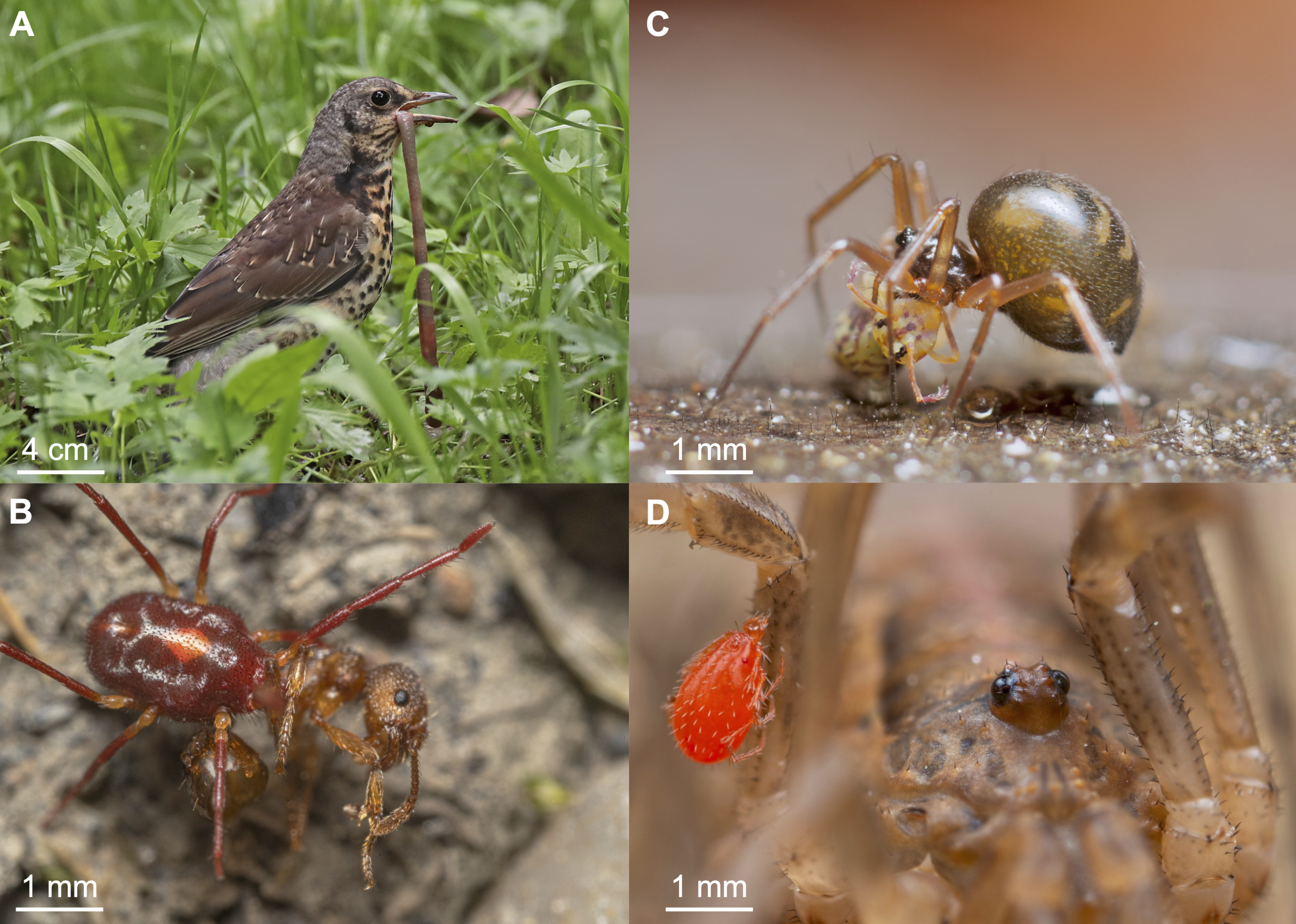What animals that live in soil eat down there is hard to observe but important to know. Over the past two decades or so, ecologists interested in this underground world have done lots of research to find out what exactly different soil animals feed on, how they are connected by these feeding (trophic) interactions, and how these interactions in turn support the many functions that we expect soils to deliver. These widely scattered studies have now been compiled and summarized by an international team of experts in a comprehensive review published in the journal Biological Reviews.
Soil is an incredibly densely populated habitat, literally teeming with various organisms that interact with each other, with plants and the soil environment in many complex ways. From microscopic single-celled protists to arthropods and earthworms, the so-called soil animal ‘decomposers’ consume soil bacteria, fungi, decaying plant roots and dead organic matter (Figure 1). Diverse and dangerous predators are waiting for you in the dark soil labyrinths, whether you are of microscopic size or a predator yourself, and even ‘giants’ like earthworms can fall prey to vertebrate animals (Figure 2).


















